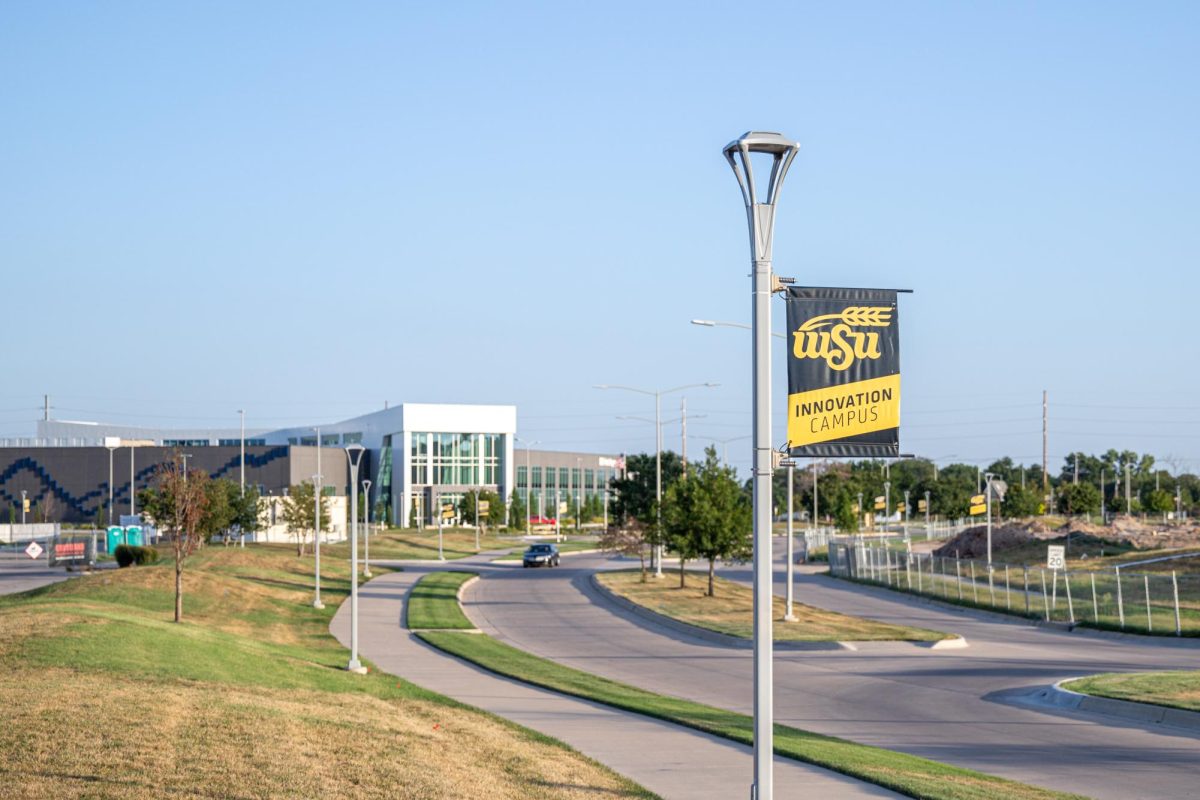Ten years ago, the east side of Wichita State University’s campus was filled with golf holes and trees. Today, more than 20 buildings have sprung from the former greens.
On Aug. 15, 2014, former WSU President John Bardo announced plans for an Innovation Campus.
The birthday of WSU’s Innovation Campus — as well as other milestones — was the theme for Wednesday’s Fall Address, an annual update on the university delivered by administrative employees.
“I can’t believe it’s been 10 years since the Innovation Campus kicked off,” Faculty Senate President Mathew Muether said in opening remarks.
University enrollment
Ashlie Jack, associate vice president for institutional effectiveness, highlighted some milestones for the university, such as increased enrollment and becoming the top transfer institution in Kansas.
In the 2023 academic year, Wichita State had more than 9,000 full-time students, an 8% increase from 2018.
Enrollment across the nation is expected to drop by 15% from 2025 to 2029, according to EAB, an educational consulting firm. EAB attributed much of this decline to reductions in the birth rate.
Jack referred to this as an “enrollment cliff,” but said the university will be prepared.
“We are leveraging our academic data and analytics to maximize our course retention,” Jack said. “We are standardizing our academic advising for consistent support for all of our students. We are creating intentional academic pathways for retention, and we are strengthening our financial outreach to all of our students.”
Prioritizing research
During the conception of the Innovation Campus, John Tomblin was the vice president of research at the National Institute for Aviation Research (NIAR). Then, he worked on industry and defense programs at NIAR.
Tomblin’s new role combines his former positions. As executive vice president for research, industry, and defense programs at WSU’s NIAR, one of his focuses is getting WSU to be an R1 university, meaning the institution would have very high research activity.
“It lets us draw down federal funding more, lets us draw down state funding more,” Tomblin said. “It attracts higher achieving students and esteem factors. That’s what we want to be.”
Wichita State is currently an R2 university, which means it has only high research activity. To get to R1 status, a university must spend $50 million in research and award 70 research-based Ph.D.s.
In 2023, Wichita State spent nearly $400 million but fell short of the required number of research-based Ph.D.s.
“So (WSU President) Rick (Muma) has challenged me to turn over every rock, (and) look at everything that we can do,” Tomblin said.
Kansas State University and the University of Kansas are R1 universities.
Much of Wichita State’s research and development has been focused on STEM fields, such as aerospace, but Tomblin doesn’t “want to be a one-trick pony.”
“I want to diversify,” he said.
To do that, Tomblin highlighted a few plans of action, including:
- Incorporating a Kansas health care data hub into the creation of the Biomedical Campus
- Joining an artificial intelligence cohort aimed at advancing AI, as well as practicing safety with it
- Creating a strategy to improve a high-performance computing system for WSU
Tomblin said all these goals will help enrollment, which is a top priority for university employees.
“If we do all those right,” Tomblin said, “We won’t have to worry about enrollment.”





